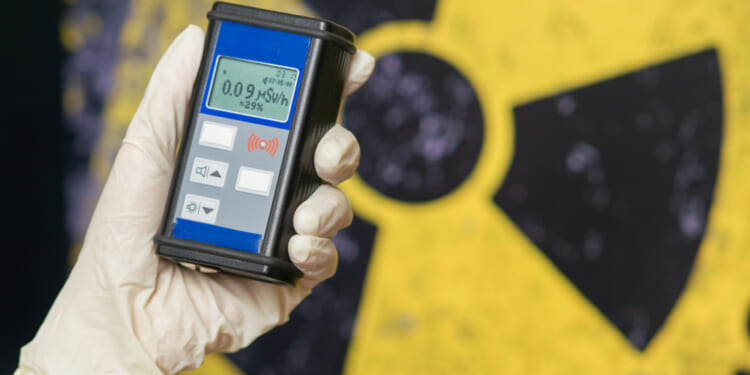Outdated radiation standards drive costs and public fear, stalling nuclear innovation. Science-based reforms could unlock advanced reactors and secure US energy leadership.
Department of Energy Secretary Chris Wright recently emphasized that America will be proactive in developing and deploying next-generation nuclear reactors. President Trump’s four executive orders (EOs) outline key policy reforms to improve licensing, permitting, and collaboration with national laboratories, as well as to modernize costly and outdated regulations.
Executive Order 14300 calls for the reform of the Nuclear Regulatory Commission (NRC), and as part of that, the adoption of science-based radiation standards. The order explicitly calls for a re-evaluation of the Linear No-Threshold (LNT) model and the As Low As Reasonably Achievable principle (ALARA). These two frameworks have guided nuclear regulation for decades. While these models may have been defensible when first adopted, they have hardened into regulatory doctrines that no longer align with the best available science, economic realities, or the nation’s strategic energy goals.
The timing is crucial. The United States aims to meet increasing energy demands, accelerate the deployment of advanced reactors, and maintain its global leadership in energy innovation. However, outdated radiation standards have led to unnecessary costs, hindered innovation, and stoked public fear for years. This cannot stand any longer. Reform is not just desirable; it’s a strategic necessity and vital for improving the economic outlook of nuclear power and sufficiently protecting public health.
The Origins and Entrenchment of LNT and ALARA
The LNT hypothesis originated from Hermann Muller’s 1927 experiments on fruit flies, which showed that radiation can cause heritable mutations. Framed by Cold War fears of fallout and atomic weapons, this research helped shape the idea that any amount of ionizing radiation linearly raises cancer risk. In 1956, the National Academy of Sciences’ Biological Effects of Atomic Radiation (BEAR) report formed LNT as the basis for radiation protection. This choice, based on uncertainty rather than solid evidence, became deeply ingrained in regulatory practices.
The ALARA principle, introduced by the NRC in 1975, was initially intended to apply the LNT concept pragmatically by requiring exposures to be kept “as low as reasonably achievable,” while considering cost and practicality. Over time, however, ALARA lost its balancing purpose. Regulatory enforcement increasingly pushed operators to minimize exposures well below natural background radiation levels, regardless of actual benefit. For example, multi-million-dollar modifications have been mandated for plants to achieve dose reductions lower than what a person receives on a cross-country flight or from eating a banana. These reductions became mandatory for licensing and compliance, fostering a culture of regulatory strictness. Over the decades, what began as a precaution evolved into an inflexible and costly regulatory regime.
Scientific Evidence Challenges LNT
Contemporary research fundamentally challenges the idea that risk increases linearly at low doses. Radiobiology demonstrates that cells are not passive victims of radiation damage; they possess complex repair systems and adaptive responses that counteract the effects of low-dose radiation. Some studies even propose hormesis—where low doses might stimulate protective biological mechanisms—though this remains a topic of debate.
Epidemiological evidence reinforces this shift. India’s Kerala cohort shows that high natural radiation does not necessarily elevate cancer risk. The Taiwan cobalt-60 apartment incident, where residents lived for years in buildings contaminated with cobalt-60, recorded cancer incidences no higher than national baselines. Nuclear shipyard worker studies also reveal no significant increase in risk at low exposures. Furthermore, reports by the United Nations Scientific Committee on the Effects of Atomic Radiation and the Organization for Economic Cooperation and Development conclude that applying linear risk models is scientifically questionable.
Economic Burdens of Over-Conservatism
The costs of maintaining ultra-conservative standards are enormous. ALARA and other overly stringent regulatory compliance inflate construction and operational budgets for nuclear plants. Decommissioning and waste management projects are similarly burdened, with expenditures driven by thresholds that are disconnected from actual health risks. The Department of Energy (DOE) has repeatedly faced cost escalations in cleanup projects, where marginal dose reductions have come at a disproportionate expense.
Medical isotope production—essential for cancer diagnosis and treatment—is also limited, increasing healthcare costs and reducing availability. The UK filter case clearly shows this inefficiency: regulators required the installation of a complex system to reduce exposure by 0.0001 millisieverts per year (mSv/year)—a dose equivalent to a banana—at a multi-million-dollar cost and months of delay, with no measurable benefit.
The persistence of LNT fuels radiophobia. The message that “any radiation is harmful” distorts public understanding, drives opposition to nuclear energy, and slows project approvals through litigation and protests. It also skews disaster responses; during Fukushima, fear-driven evacuations led to more fatalities than radiation itself. Moreover, regulatory inconsistency—where carcinogenic chemicals have exposure thresholds but radiation does not—undermines the credibility of US policy.
Moving Toward a Risk-Informed Model
International experience shows that risk-informed regulation is effective. The United Kingdom applies the As Low As Reasonably Practicable (ALARP) principle, rejecting measures where the costs vastly outweigh the benefits. While LNT is still in place, France has transitioned toward threshold-based models for low levels of radiation exposure guided by occupational data. Similarly, South Korea still uses LNT and ALARA, but sets dose limits for radiation for workers and the public. Studies of cohorts in South Korea that have shown no statistically significant connection with occupational radiation exposure and cancer provide more support for questioning whether LNT is necessary and how a risk-informed regulatory framework would be more appropriate.
Even within the United States, DOE cleanup policies acknowledge that “over-cleanup” is economically unjustifiable. Studies confirm real risks at high doses but reveal uncertainty at low exposures, thereby undermining the assumption of strict linearity. Reforming LNT and ALARA is therefore not about weakening protections; it is about making sure protections are meaningful, evidence-based, and economically sound. Several legislative and executive actions would help the United States transition to science-based, risk-informed radiation standards. Specifically, Congress should:
- Mandate Dose Thresholds: Congress should direct the NRC and Environmental Protection Agency (EPA) to establish minimum dose thresholds (e.g., 10–100 mSv/year) that exempt negligible exposures from triggering regulation.
- Repeal LNT as Default: Statutes should permit agencies to adopt threshold or stochastic models where supported by evidence, replacing LNT as the default mandate.
- Rely on the best available science to guide standards: Academia has produced extensive research indicating the need for better standards. Congress could require agencies to review standards every five years to ensure they reflect the most recent scientific knowledge.
- Reform the National Environmental Protection Act (NEPA) Guidelines: Update NEPA so that exposures, at a minimum, do not mandate exhaustive Environmental Impact Statements, simplifying approvals for reactors and isotope facilities.
And the administration should:
- Revise NRC Guidance: Integrate cost-benefit logic and dose thresholds into NRC regulatory guides and NUREGs.
- Reframe ALARA and Set a New Standard that Protects Public Health and Safety: Replace “as low as possible” with a reasonable standard to meet public health and safety requirements, and ensure reductions are only pursued when benefits exceed costs.
- Interagency Coordination: Establish a lead agency to establish the standard that harmonizes frameworks across agencies (EPA, DOE, and NRC) and removes redundant rules.
- Modernize Public Communication: Federal agencies must contextualize radiation risk through clear comparisons (e.g., air travel, natural background) to rebuild public trust.
Seizing the Moment for Risk-Informed Radiation Standards
With an administration bullish on nuclear power, an executive order demanding modernization, and legislative momentum via the ADVANCE Act, the United States has a unique opportunity to align radiation regulation with science, protect public health with integrity, and unleash the potential of nuclear innovation. By moving from outdated fear-based models to proportionate, risk-informed regulation, the United States can lead the next era of safe, reliable, clean, and globally competitive nuclear energy.
About the Author: Nick Loris
Nick Loris is the Executive Vice President of Policy at C3 Solutions. Loris studies and writes on topics related to energy and climate policies, including natural resource extraction, energy subsidies, nuclear energy, renewable power, energy efficiency, as well as the ways in which markets will improve the environment, reduce emissions, and better adapt to a changing climate.
Image: Egoreichenkov Evgenii/shutterstock


















